Uzbekistan Part IV - On The Road To Khiva
After three days in Bukhara, it was time to hit the desert road to Khiva. Marat, our driver, has begun the solo and long drive back to Tashkent so that he can pick us up from the airport in two days’ time. We will fly the long distance from Khiva in the far west back to Tashkent in the east.Standing in the hotel’s little alfresco foyer early in the morning laden with our backpacks, our new driver explains in his few words of English that the journey from Bukhara to Khiva will take about 8 hours. Pardon, what? Our guidebook had stated that the 450+ km journey was approximately 4 ½ hours. A quick phone call by the new driver to our Tashkent travel agent to explain it to us in English.
Yes, the road is very bad. It used to take around 4 or 5 hours but now it takes longer. Great news NOT to the both of us. We had developed traveller’s diarrhoea, but luckily with no pain or other symptoms except frequent bathroom stops. Gawd, I hope that shitting camel at the yurt camp wasn’t contagious. Now we had to make the mammoth drive holding in our butts for as long as was humanly possible.
The landscape for the majority of this drive was mostly aridness as far as the eye could see. Other than the odd donkey or lizard along the one-highway route, it was a stark barren landscape. We were being driven by car on what felt was one of the worst roads in the world as a result of roadworks. A new road was being constructed with the aid of German and Korean companies and their heavy machinery, but was another two or three years away from being completed.
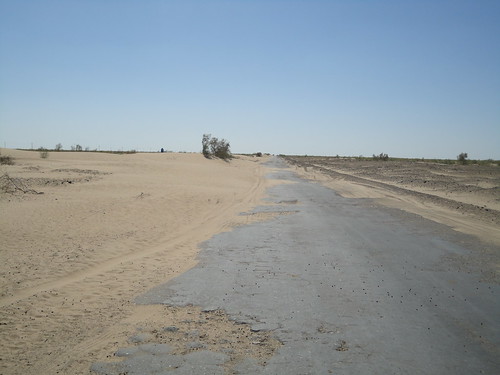 |
| The better part of the road |
 |
| Driving on roadbase |
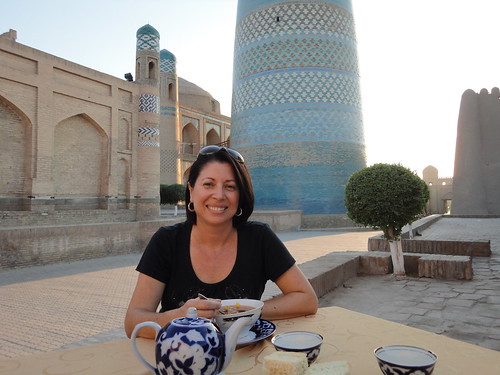 |
| The only diners at the only open restaurant in the old town |
 |
| Khiva at dusk |
By daylight, the strong summer sun bleaches the colour out Khiva’s walls. Old men, some in traditional black and white embroidered caps, sit chatting in small groups in the shade of the town’s west gate whilst through the town’s four gated entrances the colours of tiled towers and domes peer over scorched roofs.
There were very few tourists about. We met and chatted with staff from the Japanese embassy in Tashkent whilst strolling through the Harem of the khan rulers’ 12th to 17th century residence and fortress. News and condolences were exchanged regarding the devasting tsunami earlier in the year.
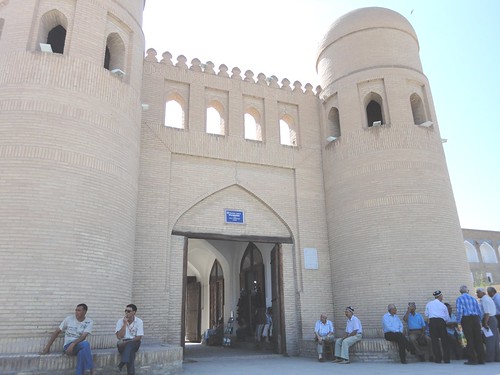 |
| Men chewing the fat by the West Gate |
There were very few tourists about. We met and chatted with staff from the Japanese embassy in Tashkent whilst strolling through the Harem of the khan rulers’ 12th to 17th century residence and fortress. News and condolences were exchanged regarding the devasting tsunami earlier in the year.
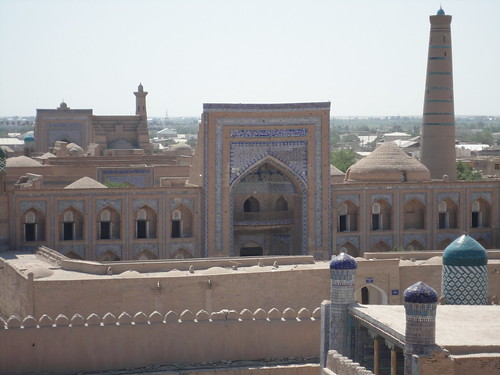 |
| Views over Khiva from the Ark's fortress walls |
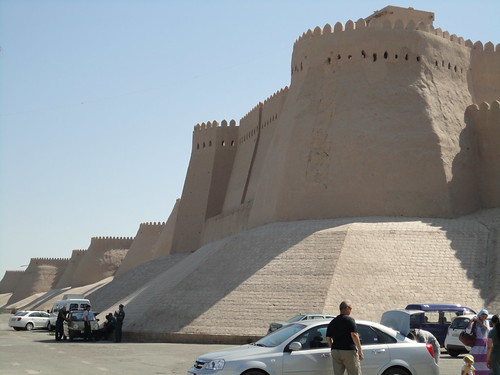 |
| Outside the walls of the Ichon Qala |
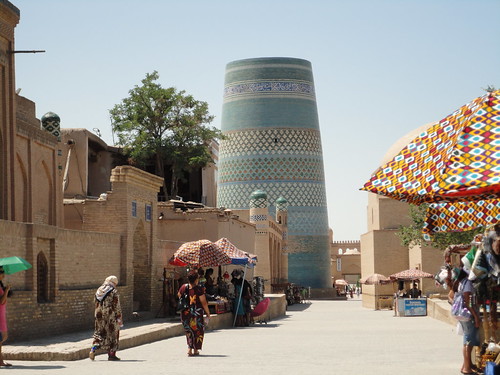 |
| Streetscape by midday |
Khiva is small enough to see and discover in a day. After our one night/ one day stay, it was a short one hour pleasant flight to Tashkent with Uzbekistan Airlines. Max and I broke out into laughter, however, on arrival at the airport. We were offloaded directly onto the airstrip and then ushered to collect our baggage from a small, ancient baggage conveyor belt sitting there outside the airport’s terminal. Marat was there to collect us and take us to our hotel before continuing our roadtrip the following day. Sinking into soft pillows and airconditioned comfort that night, we hoped that the worst of the searing desert heat was behind us.


 Hi, I'm Eva - world traveller, cultural explorer and experience seeker. Together with my husband Max, we've been globetrotting for over 20 years.
Hi, I'm Eva - world traveller, cultural explorer and experience seeker. Together with my husband Max, we've been globetrotting for over 20 years.







0 comments: